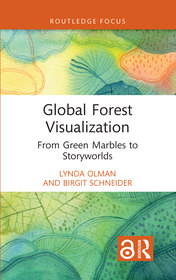
Global Forest Visualization
From Green Marbles to Storyworlds
Sorozatcím: Routledge Focus on Environment and Sustainability;
-
10% KEDVEZMÉNY?
- A kedvezmény csak az 'Értesítés a kedvenc témákról' hírlevelünk címzettjeinek rendeléseire érvényes.
- Kiadói listaár GBP 21.99
-
10 505 Ft (10 005 Ft + 5% áfa)
Az ár azért becsült, mert a rendelés pillanatában nem lehet pontosan tudni, hogy a beérkezéskor milyen lesz a forint árfolyama az adott termék eredeti devizájához képest. Ha a forint romlana, kissé többet, ha javulna, kissé kevesebbet kell majd fizetnie.
- Kedvezmény(ek) 10% (cc. 1 051 Ft off)
- Kedvezményes ár 9 455 Ft (9 005 Ft + 5% áfa)
Iratkozzon fel most és részesüljön kedvezőbb árainkból!
Feliratkozom
10 505 Ft

Beszerezhetőség
Becsült beszerzési idő: A Prosperónál jelenleg nincsen raktáron, de a kiadónál igen. Beszerzés kb. 3-5 hét..
A Prosperónál jelenleg nincsen raktáron.
Why don't you give exact delivery time?
A beszerzés időigényét az eddigi tapasztalatokra alapozva adjuk meg. Azért becsült, mert a terméket külföldről hozzuk be, így a kiadó kiszolgálásának pillanatnyi gyorsaságától is függ. A megadottnál gyorsabb és lassabb szállítás is elképzelhető, de mindent megteszünk, hogy Ön a lehető leghamarabb jusson hozzá a termékhez.
A termék adatai:
- Kiadás sorszáma 1
- Kiadó Routledge
- Megjelenés dátuma 2025. június 27.
- ISBN 9781032454016
- Kötéstípus Puhakötés
- Terjedelem112 oldal
- Méret 216x138 mm
- Súly 210 g
- Nyelv angol
- Illusztrációk 14 Illustrations, color; 14 Halftones, color; 1 Tables, black & white 674
Kategóriák
Rövid leírás:
This book project examines global forest monitoring as a means to understand the promises and problems of global visualization for climate management.
TöbbHosszú leírás:
This book project examines global forest monitoring as a means to understand the promises and problems of global visualization for climate management.
Specifically, the book focuses on Global Forest Watch, the most developed and widely available forest-monitoring platform, created in 1997 by the World Resource Institute. Forest maps are always political as they visualize power relations and form the grid within which forests become commodities. This dislocation of the idea of the forest from its literal roots in the ground has generated problems for forest visualization efforts designed to empower local communities. This book takes a critical humanistic approach to this problem, combining methods from the fields of rhetoric and media studies to suggest solutions to these problems for designers and users of platforms like the Global Forest Watch. To explain why global views of forests can be disempowering, the book relies on biopolitical and rhetorical theories of panopticism and how these views unfold a different violence on different regions of the Earth in relation to colonial history. Using this theoretical framework, the book explains the historical process by which forests came to be classified, quantified, and mapped on a global scale. Interviews with end-users of global forest visualization platforms reveal if and how these platforms support local action. Lastly, the book provides rhetorical solutions to articulate global and local views of forests without reducing one view to the other. These solutions involve looking to forests themselves for clues about how to generate more broadly effective and resilient visualizations.
This book will be of great interest to students and scholars of forest studies, climate change, science communication, visualization studies, environmental communication, and environmental conservation.
The Open Access version of this book, available at http://www.taylorfrancis.com, has been made available under a Creative Commons Attribution-Non Commercial-No Derivatives (CC-BY-NC-ND) 4.0 license.
**Winner of the 2025 National Communication Association’s Tarla Rai Peterson Book Award in Environmental Communication**
TöbbTartalomjegyzék:
Chapter One—The Promises and Problems of Global Forest Visualization
Chapter Two—Forest Maps: The Datafication of Forests From a Media Theory Perspective
Chapter Three—Zooming Into Google Gaia Maps: From Globalization to Glocalization of Forests
Chapter Four—Forests as Stories: Storyworld Networks as Alternatives to Google Gaia
Chapter Five—Case Study: Global Forest Watch
Chapter Six—Insights From Developers and Users of GFW
Chapter Seven—From Green Marbles to Storyworlds
Több




